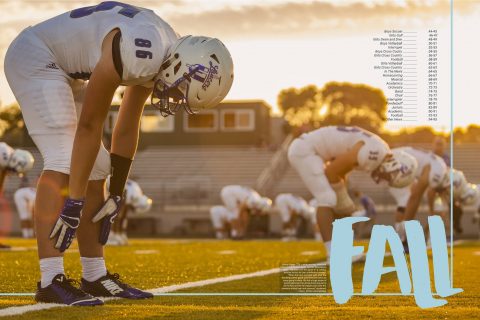Simple techniques for moving your photography from short-term to long-term memory
We all have images forever embedded in our long-term memory: a childhood photo, our high school prom, an image from a major historical event (a recent immigration photo of a young father and his daughter lying dead in the Rio Grande or a shot from 9/11 of people fleeing the World Trade Center in panic and terror) or even a funny meme that resonated with us.
What makes these images forever embedded in our long-term episodic memory vs. the hundreds of other images we see daily that vanish from our “scratch pad” memory? The key is connecting photographs to memories of viewers and allowing images to become their story. When teaching students to tell stories through the power of a photograph, it is important for them to understand why some images they create are forgotten as quickly as any of the hundreds of snaps they receive a day while others, associated with emotion and shared experiences, will not be as quickly forgotten.
I classify photographs into two groups for my yearbook photographers. The first group I coin “chicken poop images.” Typically, these photos are supporting images but can’t tell the entire story on their own. Step in it and you may hardly even notice; think Snapchat. Images on Snapchat are exactly that: snapshots. Examples of these are the supporting images on our yearbook pages that help to support and tell our stories. On their own, they would likely be forgotten as quickly as the first snap we look at in the morning. These may be headshots in our alternative story forms or a cut-out of a Starbucks coffee cup. True photographs are much more than this.
We require and expect all our photographs to be in focus, cropped tightly and sufficiently lit and exposed. Moving that image from our viewers’ short-term to long-term memory requires them to make a deeper connection with it. Connecting emotion to events is where real storytelling begins.
I refer to these as “elephant poop images” for obvious reasons: step in them and you will not easily forget. These are the images that are printed, framed or are thoughtfully edited, cropped and posted to Instagram (not simply documenting what we had for lunch). In yearbook, these are our interrupters, our division pages and hopefully our dominant photos. I encourage our photographers to ask our readers to name a photograph from the previous yearbook that they remember. Sometimes we don’t like the answer … “5,000 images and you don’t remember one?!”
The four components of a quality image
Moving from a picture (chicken) to a photograph (elephant) requires our students to understand and apply the four components that make a quality lasting and impactful image.
- Great storytelling through photography requires that students learn basic composition techniques such as leading lines, rule of thirds and framing.
- Next, using light appropriately and creatively adds impact and creates both drama and emotion within our art. Make sure your students understand that light has color, direction and intensity.
- We may compliment the cook on a finely prepared meal but never ask what brand of stove they used to prepare it. Yet, we often get caught up in the “what lens or camera did you use for that shot” discussion. Yes, the technical aspects of the photograph are important. Yes, teaching students about aperture and shutter speed is important. But, arguably, they are the least important of the four components discussed here.
- The fourth and most important aspect of a great photograph is story and emotion. This is the most difficult of the four to capture and get students to both plan and “see,” yet this final piece is what moves a photograph from good to great. Allowing the viewer to connect with an image and create their story is the ultimate goal.
We have all seen thousands of pretty sunset photographs in our lives. Almost every perfectly focused shot has employed great framing as the palm tree frames the warm orange sunset. But the one we remember is connected to us emotionally through a location, event or people we were with.

Before the shoot
Learn. Photographers should know the basic four components of a quality photograph discussed earlier and know their equipment.
Know the story. Covering an event is different from telling a story. We may have over 2,000 images of our awesome football team this year. But do we have what we need to tell the story of the individual player who overcame personal adversity. What is his story?
Let content drive design. Have the photographer and designer talked before the shoot? Where will your photograph be used? It can be difficult to crop a vertical (portrait) image into a two-page horizontal divider.
Capture variety. Good photojournalists shoot a wide variety of both horizontal and vertical images. Make sure they tell the entire story by shooting wide, medium and tight images from a variety of vantage points and perspectives.
Be aware of both action and reaction. Be sure as a photographer and storyteller to anticipate shots and TURN AROUND! Often the most emotion may be coming from the prom queen’s father as she is crowned or the coach immediately after a huge play.
After the shoot
Learn. During post-processing, it is important that we understand the basics of digital workflow to make photographs as impactful as possible. Walsworth software can do many of these, and knowing Photoshop or Lightroom to enhance lighting, exposure and clarity, reduce noise or increase contrast will help too. These tools can also help when an image is poorly lit, composition is lacking or you need to enhance the emotion through careful cropping.
Know the story. Combing through hundreds of images can be a daunting task. Photos should be carefully chosen and edited to tell the story. Have images of that student been used somewhere else in the book? Are we being inclusive of all students and striving to get each student in the publication at least three times? Do your images truly tell the story or have you just created a collage of random images?
Design. Once your photos have been carefully selected, then begin your design. Is your dominant a horizontal or vertical? Let the image drive your design, not the opposite.
Crop, Crop, Crop. Evaluate each image and crop to tell the story. Then crop again. Our biggest rookie mistakes are not cropping tightly enough.
Aim for variety. Good designers understand the need for both unity and variety in their designs, and it is a fine balance to achieve both. Nine photos of swimmers’ heads poking out above the water, no matter how good they are, do not tell the entire story.
Action and Reaction. A good storyteller will not only show what’s happening with the swimmers in the pool, but on the pool deck, in the stands and perhaps even on the bus on the way home from winning or losing the state meet.
If yearbooks are going to remain relevant, the quality and impact of the images must be far superior to the content students receive online each day. Readers must be able to emotionally connect with our images and share common experiences for this to happen.





